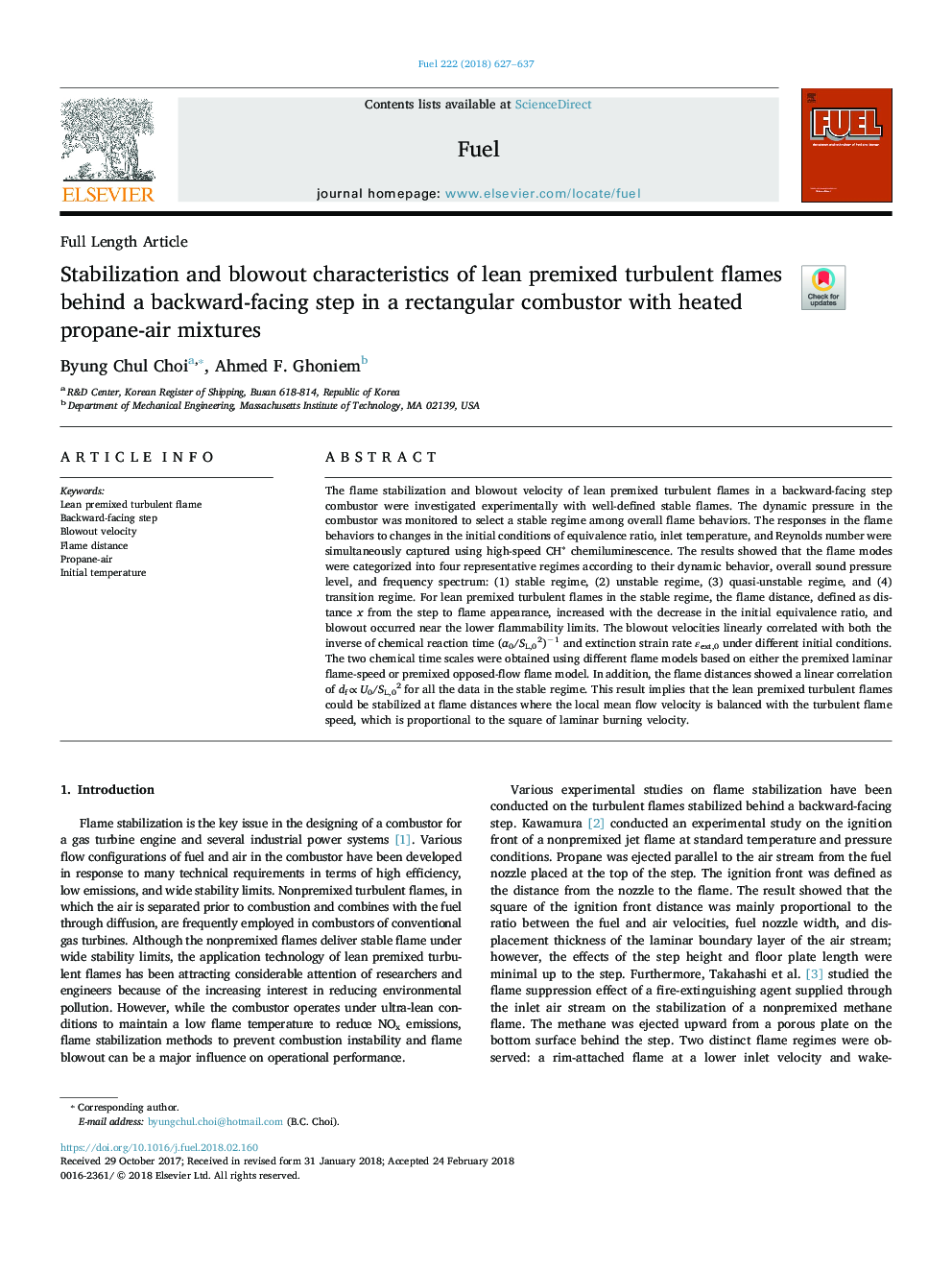| Article ID | Journal | Published Year | Pages | File Type |
|---|---|---|---|---|
| 6631433 | Fuel | 2018 | 11 Pages |
Abstract
The flame stabilization and blowout velocity of lean premixed turbulent flames in a backward-facing step combustor were investigated experimentally with well-defined stable flames. The dynamic pressure in the combustor was monitored to select a stable regime among overall flame behaviors. The responses in the flame behaviors to changes in the initial conditions of equivalence ratio, inlet temperature, and Reynolds number were simultaneously captured using high-speed CHâ chemiluminescence. The results showed that the flame modes were categorized into four representative regimes according to their dynamic behavior, overall sound pressure level, and frequency spectrum: (1) stable regime, (2) unstable regime, (3) quasi-unstable regime, and (4) transition regime. For lean premixed turbulent flames in the stable regime, the flame distance, defined as distance x from the step to flame appearance, increased with the decrease in the initial equivalence ratio, and blowout occurred near the lower flammability limits. The blowout velocities linearly correlated with both the inverse of chemical reaction time (α0/SL,02)â1 and extinction strain rate εext,0 under different initial conditions. The two chemical time scales were obtained using different flame models based on either the premixed laminar flame-speed or premixed opposed-flow flame model. In addition, the flame distances showed a linear correlation of dfâ¯ââ¯U0/SL,02 for all the data in the stable regime. This result implies that the lean premixed turbulent flames could be stabilized at flame distances where the local mean flow velocity is balanced with the turbulent flame speed, which is proportional to the square of laminar burning velocity.
Related Topics
Physical Sciences and Engineering
Chemical Engineering
Chemical Engineering (General)
Authors
Byung Chul Choi, Ahmed F. Ghoniem,
